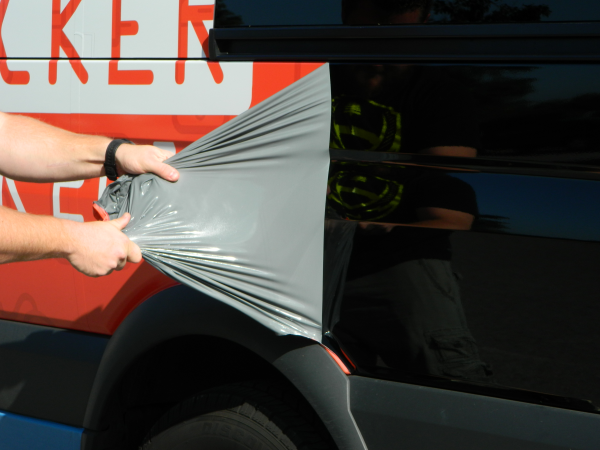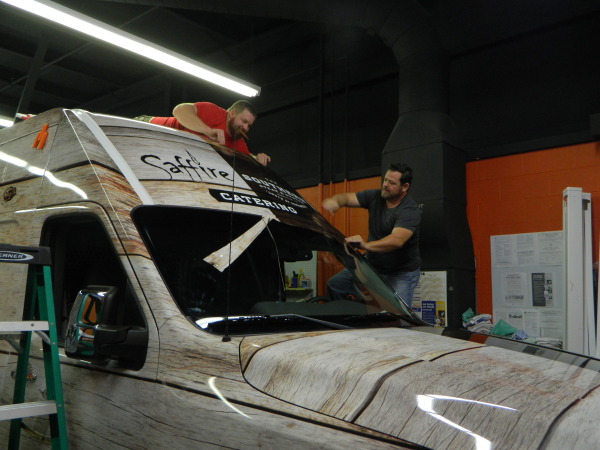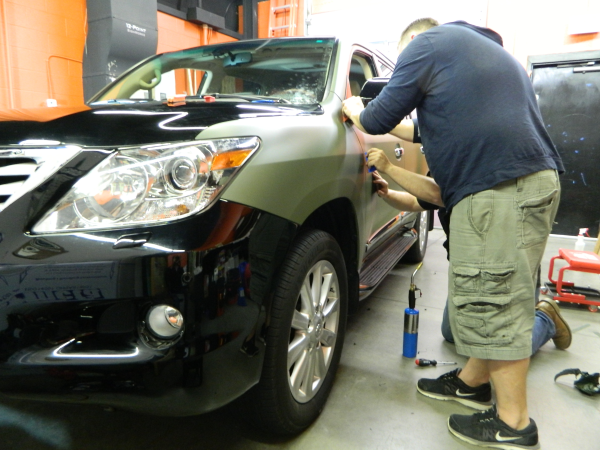Although it may have already been pretty wintry for most of you for the last month or so, we live in the south so it doesn't officially become "winter" until around late November. Then we finally get our occasional flurries of snow and below-freezing temps.

You know we just couldn't pass on an opportunity to use a Game of Thrones meme
But winter comes with a price for people looking to get their cars wrapped in vinyl or planning to apply vinyl graphics as their outdoor signage! Vinyl is a sensitive material that expands and contracts according to the temperature of the material it's applied to and the temperature of the air around it. This can present some problems when it comes to using vinyl in the winter, such as:
- Vinyl will become brittle and non-pliable in the cold so it is virtually impossible to wrap a car outdoors in the winter.
 Vinyl will not play this nicely when it's cold!
Vinyl will not play this nicely when it's cold!- The adhesive will be less effective, so vinyl lettering will not stick to surfaces as well as they should.
- Metal and glass—probably the most common materials for vinyl to be applied to—become difficult to work with because they hold temperature longer and easier than many other materials. So, if you are outside and heat metal or glass, it will get cold again very quickly.
- Companies that provide vinyl materials will usually not cover damages due to improper installation in cold temperatures under their product warranties.
Ironically, you'll get problems if vinyl is too hot, too! It takes on the consistency of chewing gum or taffy, and it's easy to stretch or warp the graphics. The best temperature range is somewhere between 48 degree and 70 degrees Fahrenheit. This is why it's very important to control the temperature of where you store and apply your vinyl. Thankfully here at 12-Point SignWorks, we have a heated garage so we're able to wrap vehicles no matter what the temperature is outside.

As you can probably tell from the scale of this photo, we can fit some pretty big vehicles in our current garage! We're also looking to expand in the future.
Here are a few pointers to help you get the most out of your vinyl despite the frigid weather:
- If you possibly can, take the item getting vinyl applied to it inside!
- If you can't take it inside, try and install in the middle of the day when the daily temperature should be at its peak.
- Each type of vinyl should come with a product data sheet that lists the minimum temperature requirements. Make sure that the surface and air around the vinyl meet these requirements before you apply the vinyl.
- There are some vinyls being developed, like the 480cv3 by 3M, that are more flexible with extreme temperatures. So if you know that you will have to be applying graphics in the cold, it may be a good idea to experiment with one of these types of vinyl.
- Heat the vinyl using heat guns or torches and heat the air around the application surface with space heaters.
 Don't be afraid of blow torches! We usually use them even if it's not cold outside. It helps improve the adhesive and get the vinyl to apply to a surface better.
Don't be afraid of blow torches! We usually use them even if it's not cold outside. It helps improve the adhesive and get the vinyl to apply to a surface better. - Don't let something that's had vinyl applied to it go into any extremely cold environments for at least 12–24 hours.
- Leave it to the pros! If you don't have any experience working with vinyl and you want to apply vinyl to something in the cold outdoors, it might be better to call professional installers to handle it.
Let us know about your vinyl projects and we'd love to help you out or answer any questions you have!



Leave a Reply